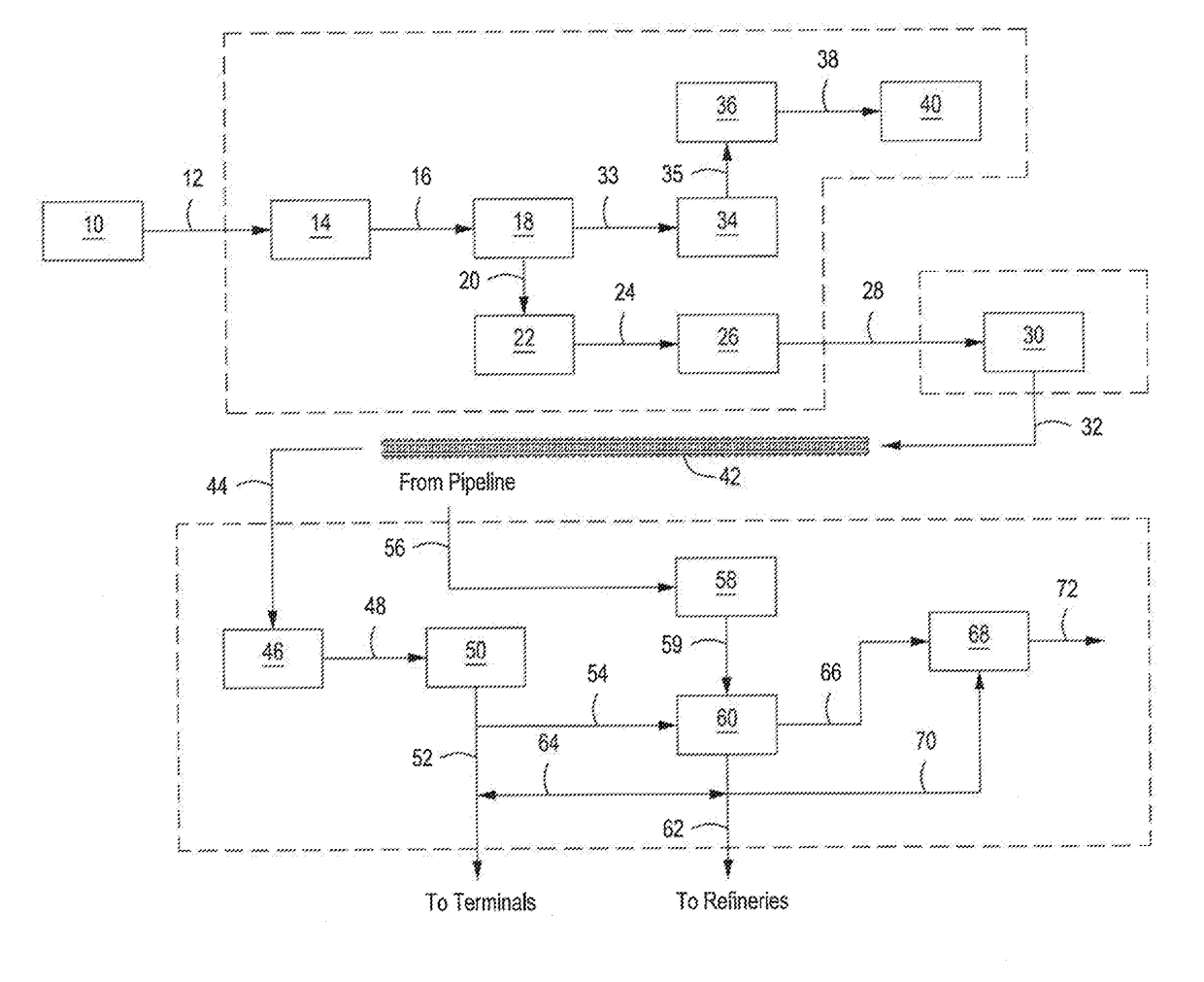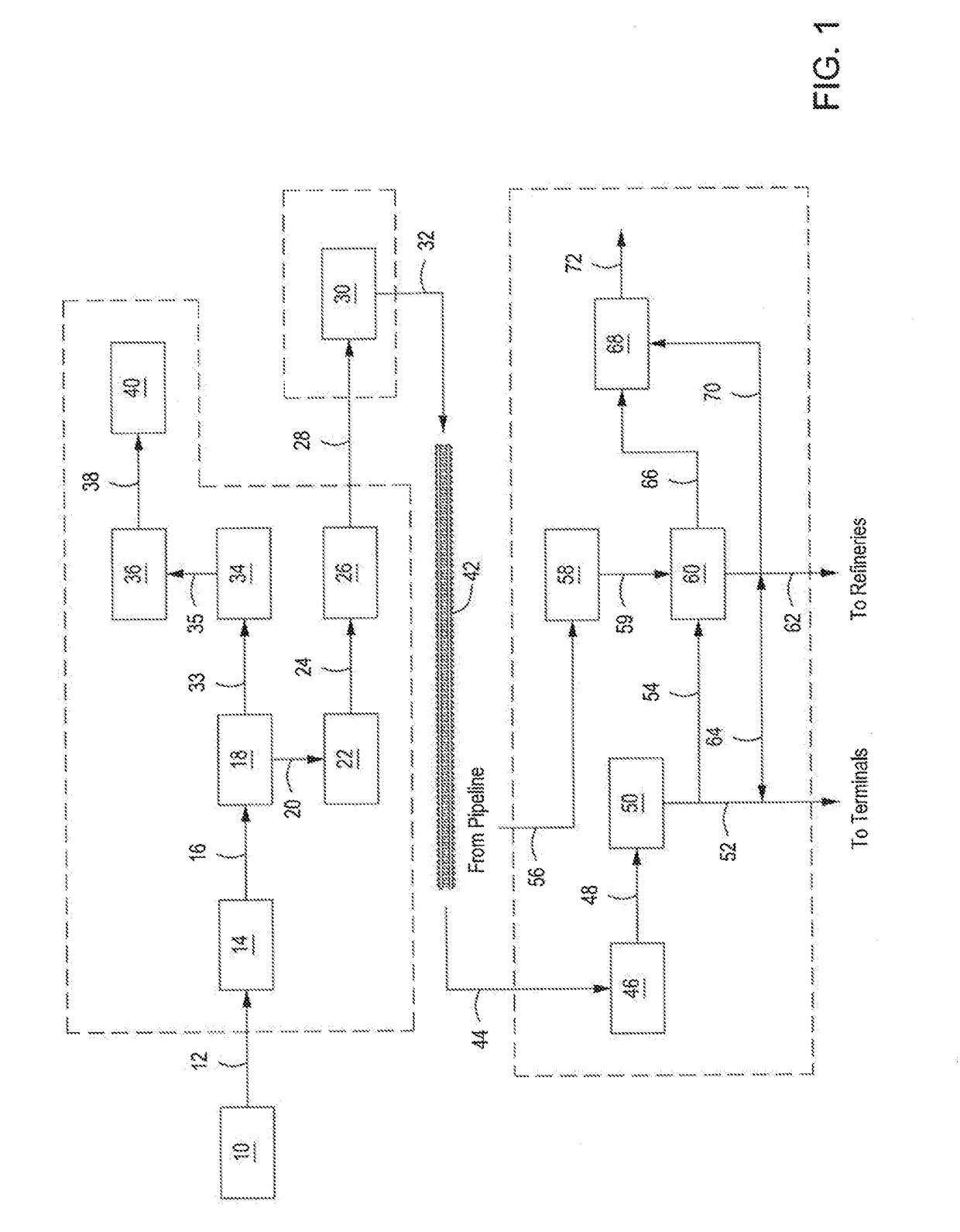Methods for treating bitumen mixtures
a bitumen mixture and treatment method technology, applied in the direction of working up pitch/asphalt/bitumen by mixing fractions, separation processes, fuels, etc., can solve the problems of lack of specific combinations of steps and features of prior methods and apparatus, and achieve the desired initial boiling point (ibp), avoid acid corrosion attacks, advantageously avoid
- Summary
- Abstract
- Description
- Claims
- Application Information
AI Technical Summary
Benefits of technology
Problems solved by technology
Method used
Image
Examples
examples
[0103]A sample of Suncor Cold Lake dilbit (CLD) was obtained from storage tank inventory and evaluated for physical properties, including light ends composition and extended liquid hydrocarbon atmospheric analysis. To simulate one or more of the methods described herein, a pot still distillation apparatus was operated over a predetermined series of runs under atmospheric conditions to strip out specific light ends from the dilbit at successively higher boiling points (FBP ranging from 50° C. to 160° C.). The resulting heavy fractions were then tested for Flash Point and Initial Boiling Point using ASTM methodology as discussed below.
[0104]Results substantiated that by removing from the CLD dilbit sample the particular light ends with boiling points (FBP) ranging up to 160° C., the resulting heavy fraction had an Initial Boiling Point (IBP) of 234.8° C. (using ASTM D86) and Flash Points of 103° C. and 113° C. (using ASTM D93 and ASTM D3828 methods, respectively).
[0105]The analytical ...
PUM
| Property | Measurement | Unit |
|---|---|---|
| density | aaaaa | aaaaa |
| absolute pressure | aaaaa | aaaaa |
| density | aaaaa | aaaaa |
Abstract
Description
Claims
Application Information
 Login to View More
Login to View More - R&D
- Intellectual Property
- Life Sciences
- Materials
- Tech Scout
- Unparalleled Data Quality
- Higher Quality Content
- 60% Fewer Hallucinations
Browse by: Latest US Patents, China's latest patents, Technical Efficacy Thesaurus, Application Domain, Technology Topic, Popular Technical Reports.
© 2025 PatSnap. All rights reserved.Legal|Privacy policy|Modern Slavery Act Transparency Statement|Sitemap|About US| Contact US: help@patsnap.com



